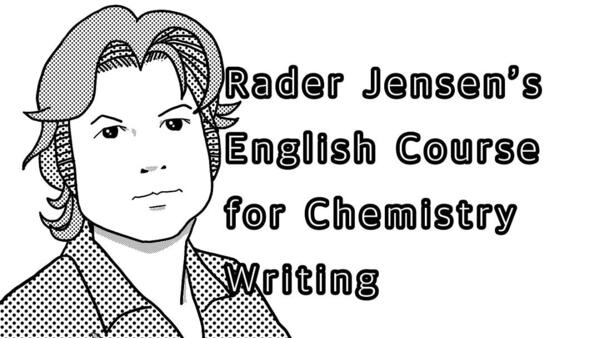CSJ Journals
[化学論文のための英語講座] 第9回:現在完了形と過去完了形 Part1
(English version is here.)
現在形は事実を伝え、過去、現在、未来にも存在することを表します。過去形はもう完成した出来事や状態を表します。現在完了形は過去から現在まで繰り返すか続いていることを表します。化学論文では研究背景を述べる時に現在完了形を用います。
以下の例文で確認しましょう。
Palladium has been shown to catalyze the cross coupling of organic halides or triflates with organozinc compounds.
訳文:パラジウムが、有機ハロゲン化合物やトリフラートと有機亜鉛化合物とのクロスカップリングを触媒することが明らかになっている。
Negishi demonstrated in the late 1970s that palladium can catalyze the cross coupling of organic halides or triflates with organozinc compounds.
訳文:根岸は1970年代後半に、パラジウムが有機ハロゲン化合物やトリフラートと有機亜鉛化合物とのクロスカップリングを触媒することを示した。
前者は、何年か、何回か、といった情報は述べていません。しかしこのように書けば、出来事が今までに何回も繰り返したことがある(継続している)印象を与えることができるため、現在完了形を使います。
一方、後者では動作の主や年を示しており、元の発明を強調するので過去形を使います。
前者で「palladium was shown to」、後者で「Negishi has demonstrated」としても、文法的には正しいですが、例文のように書いた方が自然です。
出来事(ここでは発見した事実)を強調する場合、例えば発見した時点を明確に伝える場合には、過去形の方が普通に使われています。発見した事実より、繰り返している現象(パラジウムが触媒作用を有すること)を強調する場合は、現在完了形の方が自然だと考えられます。
研究論文に現在完了形は必須な場合が多いです。さらに例文を見てみましょう。
(1) 過去に一回きりの出来事を述べる場合は過去形です。
Fukui first proposed frontier molecular orbital theory.
訳文:福井はフロンティア分子軌道理論を初めて提唱した。
Brandt first isolated elemental phosphorus.
訳文:ブラントは元素としてのリンを初めて単離した。
Molina shared the Nobel Prize in Chemistry in 1995.
訳文:モリーナは1995年にノーベル化学賞を受賞した。
(2) 過去から今までの期間に継続することを述べる場合は現在完了形です。
DIBALH has been a particularly useful reducing agent in organic synthesis.
訳文:DIBALHは有機合成において特に有用な還元剤である。
Photocatalytic water splitting has received intense focus in recent years.
訳文:光触媒による水分解が近年注目されている。
次回も引き続き「現在完了形と過去完了形」です。
Present Perfect and Past Perfect Tenses
The present tense conveys realities that exist in the past, present, and into the future. The past tense (preterit) represents completed events or conditions. The present perfect tense presents events or conditions that began in the past and repeat or continue to the present. In chemistry writing, the present perfect is used when presenting research background.
Let us examine this in the following examples.
Palladium has been shown to catalyze the cross coupling of organic halides or triflates with organozinc compounds.
Negishi demonstrated in the late 1970s that palladium can catalyze the cross coupling of organic halides or triflates with organozinc compounds.
In the former, when the event occurred or if it was repeated is not stated. Writing this way gives the impression that the event has been repeated continuously up to the present, and the present perfect tense is used. In the latter, on the other hand, the actor is stated and the original discovery is stressed, and thus, the preterit is used. In the former "palladium was shown to", and in the latter "Negishi has demonstrated" would also be grammatically correct, however, the original forms are more natural.
When emphasizing an event (in this case a discovered fact), for example, when clearly conveying the time of a discovery, the preterit is usually employed. When the repeating phenomenon (palladium is catalytically useful) rather than the discovery is stressed, the present perfect can be thought of as natural.
In research reports there are many cases in which the present perfect tense is required. Let us look at further examples.
(1) When presenting events that occurred once in the past the preterit is used.
Fukui first proposed frontier molecular orbital theory.
Brandt first isolated elemental phosphorus.
Molina shared the Nobel Prize in Chemistry in 1995.
(2) When expressing events that have continued for a period in the past to the present the present perfect tense is used.
DIBALH has been a particularly useful reducing agent in organic synthesis.
Photocatalytic water splitting has received intense focus in recent years.
To be continued in part 2.
